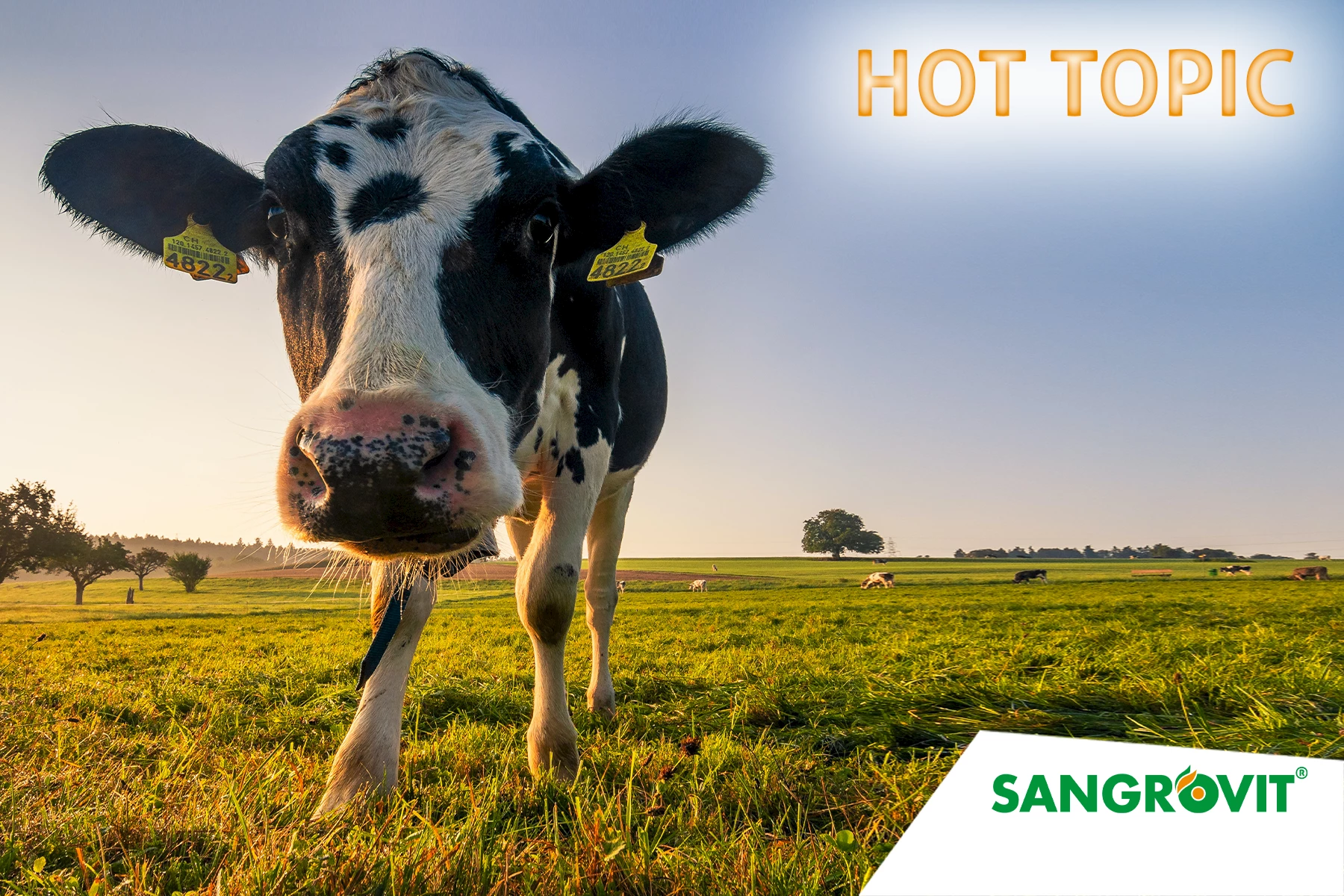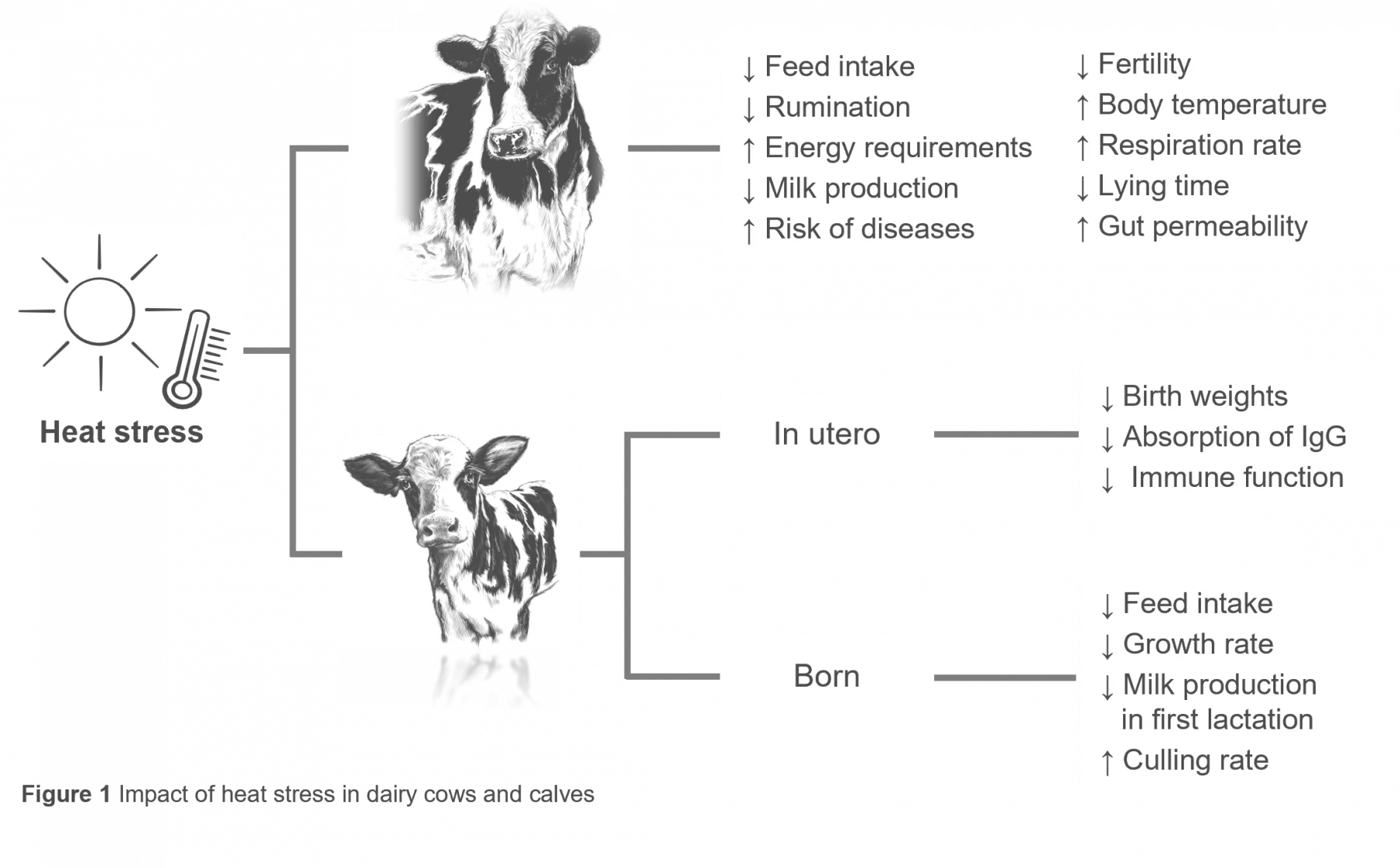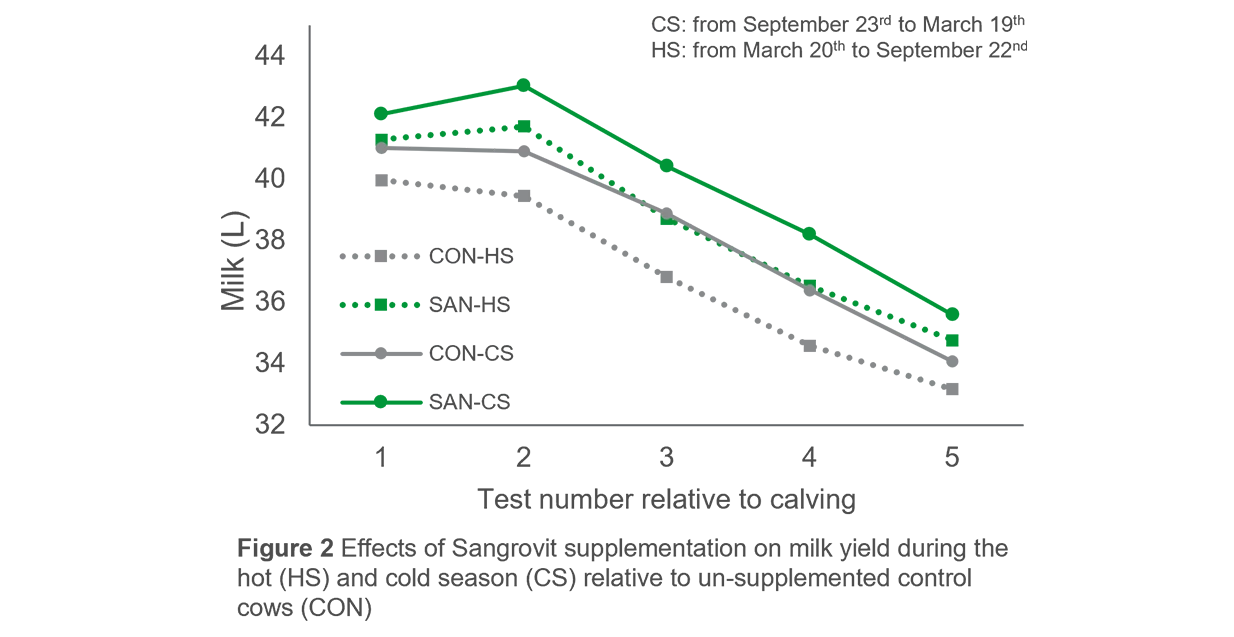
Effects of heat stress on dairy cattle
Global warming has become a major concern in the recent years. Environmental temperature has increased at an average rate 0.18 °C per decade in the last 30 years and is expected to increase another 0.8 – 2.6 °C by 2050. This rise in ambient temperature has major negative consequences on livestock and agriculture. Among food producing animals, dairy cattle are one the most susceptible species to heat stress (HS) due to their elevated metabolic heat production and low body surface area for heat dissipation. Heat stress is associated with a negative impact on animal welfare and productivity (Figure 1).

Sangrovit®
Sangrovit® is a natural feed additive derived from Macleaya cordata, a plant that belongs to the Papaveraceae family. The active ingredients present in Sangrovit® are the isoquinoline alkaloids (IQs). These alkaloids, with documented mode of action on the digestive system, promote feed intake and support the digestibility of nutrients. Consequently, more energy and nutrients from the diet are available for maintenance and productive processes, hence supporting productivity and contributing to the overall health of the animals. Furthermore, studies in ruminants and other species demonstrated that supplementing Sangrovit® under heat stress conditions mitigates the negative impact of elevated temperatures and humidity.

A study conducted in 30 dairy herds in France aimed to evaluate the effects of Sangrovit®, supplementation on performance of lactating dairy cows. A total of 1226 dairy cows were included in the study accounting for lactation number and milk production and somatic cell counts (SCC) on the previous lactation. Approximately 21 days prior to the expected calving date, dry cows were randomly assigned to 2 treatments. Cows in the control group (n=613) were fed the basal diet while cows in the test group received Sangrovit® (n=613) through the transition period into mid-lactation.

Overall, cows in the Sangrovit® group (SAN) produced more milk (1.72 L) than control cows (CON). Furthermore, an analysis accounting for season of the year was conducted. The hot season was defined from March 20th until September 22nd while the cold season was defined as the time frame between September 23rd to March 19th.
Analysis by season revealed that, although milk yield was improved during both seasons in cows receiving Sangrovit®, a better response in milk yield was observed in cows supplemented with Sangrovit® during the hot season (Figure 2).
On average, somatic cell counts (SCC) were lower for cows that received Sangrovit® than for cows in the CON group (133.0 x 103 vs 254.8 x 103).
Furthermore, the proportion of cows with SCC > 200,000 (indicative of subclinical mastitis) was evaluated during both seasons of the year. While reduction in the proportion of cows with SCC > 200,000 was observed during both seasons in cows that received Sangrovit® relative to control cows, the greatest reduction was observed in the spring and summer months (Figure 3; reduction in CS = 34.97%; reduction in HS = 48.03%).


Download the pdf version of the Hot Topic written by Phytobiotics' ruminants expert Santiago Bas.
Download the HOT TOPIC (PDF) here >>
Contact our experts or send us a message. We will contact you as soon as possible.